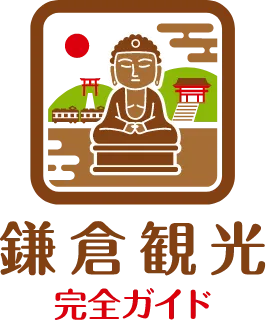Enoshima Shrine (江島神社)
Discover the Enoshima Shrine (江島神社)
Standing gracefully on Enoshima Island (江の島) off the Shonan coast, Enoshima Shrine traces its origins to a legendary emergence of the island in the mid-6th century. Formerly known as “Enoshima Myojin (江島明神),” it is now widely revered as “Enoshima Benzaiten (江島弁財天).” The enshrined deities are three sister goddesses from Japanese mythology—Tagiri-hime-no-Mikoto (多紀理比賣命), Tagitsu-hime-no-Mikoto (田寸津比賣命), and Ichikishima-hime-no-Mikoto (市寸島比賣命)—collectively known as Enoshima Okami (江島大神).
Enoshima Shrine was visited by historic figures such as Minamoto no Yoritomo (源頼朝), the first shogun of the Kamakura Shogunate (鎌倉幕府), and Hojo Tokimasa (北条時政), the first regent. Stories of the Five-Headed Dragon (五頭龍) and legends of Kobo Daishi (弘法大師) further enhance the shrine’s sacred mystique.
Highlights of Architecture, Nature, and Scenic Beauty
Enoshima Shrine comprises three main halls—Hetsu-no-Miya (辺津宮), Nakatsu-no-Miya (中津宮), and Okutsu-no-Miya (奥津宮)—each enshrining a different goddess. At Hetsu-no-Miya near the entrance, visitors pass through a sacred ring (chinowa) for purification. In the middle of the island, Nakatsu-no-Miya features a suikinkutsu (水琴窟), a water harp that creates soothing echoes. At Okutsu-no-Miya, don’t miss the ceiling painting of the “Eight-Directional Staring Turtle (八方睨みの亀).”
In the Hoanden (奉安殿), you’ll find two revered Benzaiten statues—Happi Benzaiten (八臂弁財天) and the nude Myoon Benzaiten (妙音弁財天), marking it as one of Japan’s Three Great Benzaiten Shrines. Other popular spots include the Zuishin-mon Gate (瑞心門) with its vivid lion carving and the Hakuryu Pond (白龍池), where visitors can wash coins for fortune.
Spiritual Blessings and Cultural Significance
Each shrine hall offers different blessings: Hetsu-no-Miya is known for financial luck and success in contests, Nakatsu-no-Miya for beauty and the arts, and Okutsu-no-Miya for safe travels and romantic luck. The Wadatsumi-no-Miya (龍宮) adds fertility and childbirth to the list of blessings.
The three goddesses were said to be born from a sacred oath between Amaterasu Omikami (天照大神) and Susanoo-no-Mikoto (須佐之男命), imbuing the shrine with deep mythological importance.
Local Delicacies and Interactive Experiences
Don’t miss the culinary offerings on Enoshima Island. The famed shirasu-don (しらす丼), made with fresh whitebait, and the giant octopus rice crackers are must-tries. Along the approach to the shrine, visitors can enjoy traditional Japanese sweets and local souvenirs while strolling.
Interactive rituals like passing through the chinowa ring or washing coins in the sacred pond offer memorable spiritual experiences.
Omikuji, Goshuin, and Unique Traditions
A wide variety of omamori (charms) and goshuin (shrine stamps) are available at Enoshima Shrine. Popular ones include charms for love, beauty, and financial success. Goshuin are particularly appreciated by international visitors as meaningful souvenirs.
How to Access and Opening Hours
Access to Enoshima Shrine is mainly by foot, although the terrain includes many stairs and slopes. For easier access, the paid Enoshima Escar escalator can help. The island is reachable on foot from nearby train stations, and the Bentenmaru (べんてん丸) pleasure boat is also an option. Most facilities are open from 8:00 AM to 5:00 PM, though times vary by season.
When Is the Best Time to Visit?
To fully appreciate the spiritual serenity, early morning visits are highly recommended. The peaceful atmosphere and crisp sea air create a truly rejuvenating experience. Seasonal highlights like the Enoshima Toro (江の島灯籠) light-up event in summer add magical charm.
In the evening, guests can witness a stunning view of Mt. Fuji (富士山) beyond the sea. Once the daytime crowds disperse, the quiet ambiance becomes an unforgettable privilege—especially for those staying nearby.
Nearby Spots Worth Exploring
Enoshima Island offers more than just the shrine. The Enoshima Sea Candle (江の島シーキャンドル), Iwaya Caves (岩屋), and Chigogafuchi (稚児ヶ淵) offer scenic vistas and nature trails. Beyond the island, the Enoshima Aquarium (新江ノ島水族館) and Shonan Beach areas are within walking distance—perfect for extended exploration.
During the summer Enoshima Toro (江の島灯籠) season, the entire island glows with over 1,000 lanterns, making for a dreamlike night walk. From the entrance path to Okutsu-no-Miya, the shrine becomes part of an enchanting lightscape.
Who Will Enjoy It Most?
- Those in performing arts or music fields: Nakatsu-no-Miya’s blessings enhance talent and creativity
- Visitors seeking love and relationships: Okutsu-no-Miya is popular for romantic wishes
- Peace seekers: Early mornings and evenings offer quiet, reflective moments
- Families: Fertility blessings, nature walks, and delicious local food appeal to all ages
Thanks to the flexibility of staying at a contactless smart hotel, you can easily schedule early or evening visits and avoid the crowds. Experience the shrine your way.
Wrap-Up: Enoshima Shrine and the Value of a Flexible Stay
Enoshima Shrine is a rare spiritual destination where history, mythology, and the sea converge. Feel the blessings of the Three Goddesses and refresh your body and soul in this sacred setting. Seasonal changes reveal new beauty each visit, making it a place worth returning to again and again.
Whether in the stillness of dawn or the magic of lantern-lit evenings, you’ll find moments of connection and calm that make your time here truly special.l escape. Don’t miss this Shonan power spot where history, nature, and prayer harmonize.
